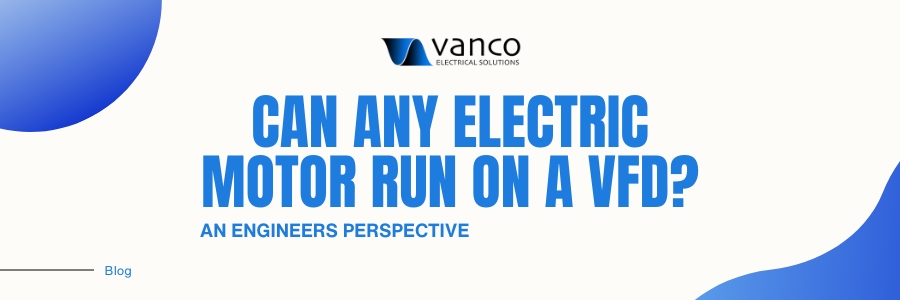Introduction
The versatility of Variable Frequency Drives (VFDs) has made them indispensable in modern industrial applications. However, the question of motor compatibility often arises. This article will delve into the technical nuances of motor-VFD compatibility, providing engineers with a comprehensive understanding of the factors influencing this relationship.
Understanding Motor and VFD Characteristics
To effectively assess compatibility, engineers must possess a thorough grasp of both motor and VFD parameters.
- Motor Characteristics:
- Motor type (induction, synchronous, DC)
- Voltage and current ratings
- Power factor
- Torque-speed curve
- Insulation class
- Enclosure type
- Frame size
- VFD Characteristics:
- Output voltage and current ratings
- Frequency range
- PWM modulation type
- Motor control algorithm
- Overload protection capabilities
- Environmental ratings
Compatibility Factors
Several critical factors determine whether a motor can be successfully operated with a VFD:
- Voltage and Current Matching: Ensuring compatibility between motor and VFD voltage and current ratings is fundamental. Overloading or undervolting can lead to premature motor failure.
- Motor Design: The motor’s design, particularly the rotor type (squirrel cage, wound rotor), influences its suitability for VFD operation. Wound rotor motors generally offer better starting torque and speed control but require additional components.
- Motor Insulation: The motor’s insulation class must be compatible with the VFD’s operating temperature and voltage levels.
- VFD Control Algorithm: The chosen VFD control algorithm (scalar, vector, direct torque control) impacts motor performance and compatibility. Vector control, for instance, provides superior torque control and dynamic response.
- Motor Load Characteristics: The nature of the motor load (constant torque, constant power, fan/pump) affects VFD selection and performance.
Compatibility Challenges and Solutions
Engineers may encounter compatibility challenges such as:
- Motor Heating: Excessive motor heating can occur due to increased current harmonics or improper VFD settings. Solutions include using low-harmonic VFDs, installing input filters, and optimizing motor ventilation.
- Torque Ripple: Torque ripple can cause vibrations and mechanical stress. Mitigation strategies involve careful motor and VFD selection, as well as advanced control algorithms.
- Bearing Currents: VFD-induced bearing currents can lead to premature bearing failure. Implementing bearing current compensation techniques or using insulated bearings can address this issue.
Conclusion
While it’s technically possible to operate various motor types with VFDs, achieving optimal performance and reliability requires careful consideration of motor and VFD characteristics. By understanding the compatibility factors and potential challenges, engineers can make informed decisions to select the most suitable motor-VFD combination for their specific application.

